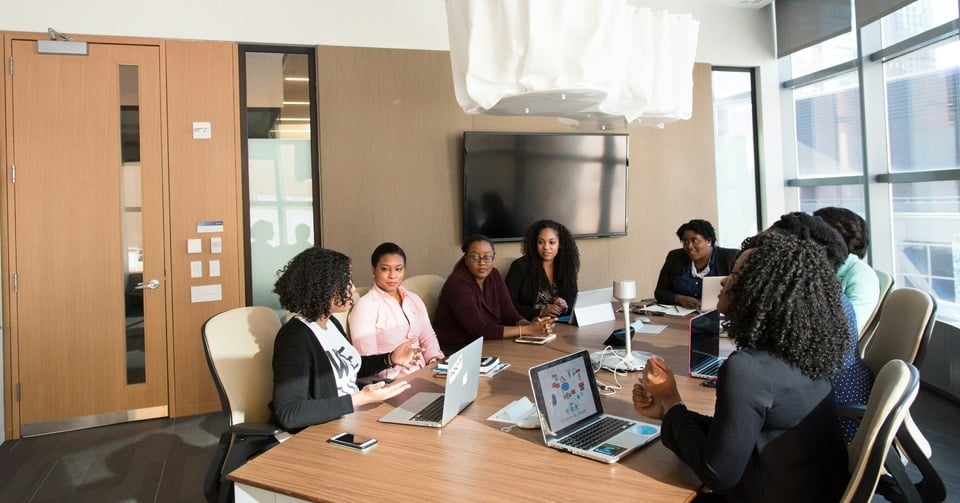Modern social learning: the best way to gain critical soft skills

New hires and graduates lack the soft skills necessary to become productive quickly, according to WorkDay Bloomberg research. The top four skills deficits are: ability to work in teams, analytical reasoning, complex problem-solving and adaptability -- exactly the skills needed to create what Deloitte calls the “social enterprises” that will dominate future work.
Deloitte’s assertion is that the answer to the skills gap “might be right under your nose,” in the unrecognized talent and capabilities of your current staff. The question arises: can you teach soft skills? Our experience is yes; every organization can enhance these critical skills in their workforce. But they need one critical thing to be successful: an effective social learning design.
Successful organizations depend on subtle social networks
Workplaces are complex, confusing and often contradictory places. They are defined by the rules governing what gets done and the social networks that mediate them. Rules tend to be reassuringly explicit: ‘here’s the manual, learn it!’ Social networks are more subtle: ‘we do things differently around here, you’ll pick it up’. Weaving the two together creates strong and successful organizations.
Take just one of those highly valued modern workforce skills - adaptability. This is the ability to react to changing circumstances effortlessly, for example moving fluidly across multi-functional teams, adopting an output-focused leadership style, or simply changing up what you do each day. Granted, adaptability is not for everyone. Many of us want the certainty that today at work will be similar to yesterday, and tomorrow will be more or less like today. But for those who react well to change, their time has come.
Watch, learn, apply
So how do you teach the soft skill of adaptability? There is no manual for adaptability, and if there was I doubt you’d use it. If there is such a thing as the “Seven Secrets of Adaptability,” you would be unlikely to read them off a slide and change how you face the world. So the basic “do this, then that” teaching method is of little use.
A more promising approach might be to have people reason out why being more adaptable at work is better than being told what to do all the time. You experience a new situation, you think about its impact, you modify your behavior, then you assess the impact of the change you made. And you learn. This is experiential learning as described by David Kolb (1984).
Experiential learning is a sub-discipline in learning design. Kolb modelled the thought processes we go through as we experience something, reflect on it, model it and apply it in the real world. He proposed that this is a continuous cycle that we deploy in our day-to-day. To see this in practice, observe the rising success of social media as a learning tool. Particularly for task-based knowledge, YouTube now provides the ‘go-to’ reference video.
Experiential learning becomes even more powerful when it gets designed into the social fabric of the organization. Humans are social animals, highly evolved to live and work in groups. In a group it is important to watch what everyone else is doing and learn from them. This is ‘learning as a social practice’: observe others, learn the lessons from what you see, and apply them.
Work is a web of formal and informal groups: the organization, the division, the team, the folks on the second floor, everyone in finance. Each group comes with its own unspoken rules and cultural norms and in our desire to belong we internalize the group’s beliefs, attitudes and values. Learning theorists describe such a group as a ‘community of practice’.
The intensity of the group influence is determined by its relevance to us. Not surprisingly, the key influencers at work are those we have formed close personal relationships with, our professional peer group, our immediate superior, and the senior management (as culture setters).
The High Priest of ‘social learning’ is Albert Bandura. His social learning theory, first published in the 1970’s, can be distilled into this concept: “we learn by observing and modeling others”. Bandura’s insight was twofold: first, that we bring our individuality to the learning system, and second, that we all engage in a process of observational learning, basically by watching what everybody else is doing and framing it for our own world.
Simulation mimics the real world experience
At ETU, we build experiential learning into the core of our simulation designs: you’re immersed in social/contextual/job-relevant scenarios, you actively make decisions to drive outcomes, you observe interactions and responses, you receive personalized coaching to describe cause and effect of your decisions. Ultimately, you connect your learning to the real world.
There are four personal dimensions to this which can get baked into a learning design:
- Intention – to what extent we are focused on the problem
- Anticipation – our capability to predict and assess outcomes
- Self-reaction – our ability to react to feedback
- Self-reflection – our ability and opportunity to reflect on what is happening
You use this ‘scaffolding’ through ‘situated learning’ to close the gap between learning and doing, i.e. “the flow of work”. Situated learning can be tasks and activities that are modeled as closely as possible to the real world and/or be as representative as possible of the social group and the learner’s relationship to it.
Say, for example, an organization realizes its product development cycles are too long and wants to remodel its approach. Instead of product managers telling engineers what the market needs, it wants to try a new model in which pre-sales engineers split their time between selling and working within development teams.
Reactions to such a major change might range from enthusiasm, to resistance, to outright hostility. Some would see it as an opportunity, others as a threat. How a company plans the change is critical to its success. A typical change management approach would be: set the intention, plan, pilot, collect data, feedback, adapt, widen the roll-out and all along the way: educate and communicate. This is social learning in practice.
ETU simulations have played their part in many such change initiatives. The ability of simulation to provide observational learning and feedback loops in which learners recognize themselves in the learning program is unparalleled. Learners see the intention being set, observe the cause and effect of new behaviors and then develop the new desired behaviors themselves through active decision making and reflection.
This has become increasingly important in a distributed workforce where many of us are working from home or splitting our time between home and the workplace. The value of simulation to create social learning opportunities has never been more relevant.

